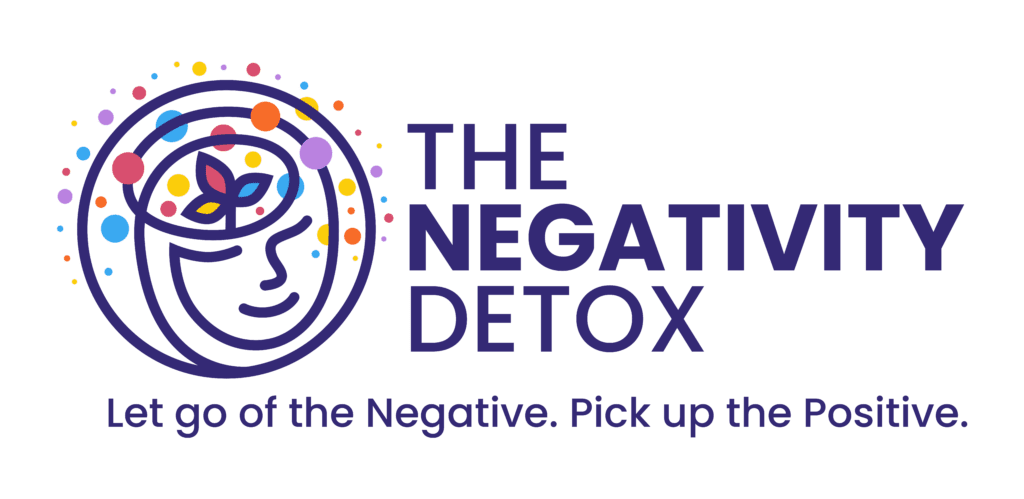What if everything you learned about leaving your comfort zone to achieve growth was wrong?
In the vast world of self-help, a phrase has been echoed for years: “Leave your comfort zone to get what you want.” As you probably heard, many experts have long touted that advice as the key to growth, success, and happiness. But what if everything we heard about leaving a comfortable space was, in fact, a myth?
Misinformation?
Flat-out wrong?
Or even worse – a lie all along?
What if the real key to success wasn’t leaving your comfort zone but enlarging it?
Kristen Butler, founder and CEO of Power of Positivity and the author of the groundbreaking book, “The Comfort Zone,” challenges this age-old advice. She presents a fresh perspective that might change how you view your personal and professional journey.
The Real Comfort Zone
Kristen proves how actual growth doesn’t come from abandoning our comfort zones. Instead, it’s about stretching it, making space for new skills and experiences while maintaining comfort. Of course, striking this balance is essential for mastering new challenges and expanding our horizons.
When you’re genuinely in your Comfort Zone, the signs are clear:
- Happiness: A deep sense of contentment and joy in what you do.
- Success: Achieving your goals and feeling fulfilled.
- Gratitude: Appreciating the journey and the lessons along the way.
- Abundance: Recognizing the wealth of opportunities and blessings in your life.
- Balance: Making time for work, play, and family contributes to happiness.
The Misconception of Leaving the Comfort Zone Leads You to the Complacent Zone or Survival Zone
While the intention behind the advice to “leave your comfort zone” might be well-meaning, it often leads individuals into two detrimental spaces: the Complacent Zone and the Survival Zone.
- The Complacent Zone: Here, you might feel trapped in the monotony of life. You have a nagging feeling of dissatisfaction, complacency, and longing for something more. As a result, you might find yourself stuck in a rut, constantly comparing your life to others and slightly jealous.
- The Survival Zone: This is where ambition turns toxic. In the survival zone, you’re constantly on the go, pushing yourself to the brink. But it’s not practical or efficient. So you live fueled by stress, sometimes anxiety, and a feeling that no matter how hard you try, you’re just treading water. It isn’t growth; it’s mere survival.
Here Are Illustrations of Each Zone
Here are some examples of living in each space: the Comfort Zone, Complacent Zone, or Survival Zone.
Liz’s Life in the Comfort Zone
The sun streamed through the sheer curtains, casting a soft golden hue over the room. Liz stretched, feeling the warmth of the morning sun on her face. As she sat up, her thoughts wandered to the day ahead, and a smile spread across her face. She was genuinely in her Comfort Zone, and every aspect of her life was a testament to that.
Liz’s apartment was a cozy haven adorned with souvenirs from her travels. A beautiful tapestry from India hung on one wall, and a collection of postcards from various European cities adorned a corkboard near her desk. Each item told a story of adventure, exploration, and the joy of discovering new cultures. Travel was her passion, and she saved up for her trips while enjoying the present.
Her mornings usually began with a healthy breakfast – a bowl of oatmeal topped with fresh berries and a drizzle of honey today. As she ate, she thought about her courses at the local community college. Learning was another passion of hers. Whether it was a language class or a course on digital marketing, Liz believed in constantly upskilling. This boosted her confidence at work and enriched her personal life.
Work was another source of joy for Liz. She had a sales job at a reputable company, which was everything she had hoped for. The pay was good, allowing her to live comfortably and save for her travels. Her colleagues were supportive, and she had formed genuine friendships over the years. The company’s gym membership benefit was a bonus. After work, she would head to her yoga class twice a week. The deep stretches and meditative moments were therapeutic, and she had made some of her closest friends in that class.
Liz’s personal life was equally fulfilling. She was engaged to a kind-hearted and supportive partner. They had met during a trekking trip in Nepal and shared a love for adventure. Their wedding was just around the corner, and the excitement was palpable. They often spent evenings planning their honeymoon, a mix of relaxation and exploration.
As she finished her breakfast, Liz received an email notification. It was from her manager, reminding her of the upcoming meeting to discuss her promotion. She felt a surge of gratitude. Her company noticed her diligence, and she was on the path to even greater success.
Later that evening, as Liz celebrated her best friend’s birthday, she couldn’t resist a slice of the delicious chocolate cake. After all, she believed in balance.
Liz took a moment to reflect as she laughed and chatted with her friends. She had come a long way from college, where she had graduated with nothing but a student loan. But with determination, planning, and a positive attitude, she had built a life she was proud of.
Liz was the embodiment of someone in their Comfort Zone. She had found the perfect balance between work, passion, and personal life. As a result, Liz was happy, successful, and grateful for every moment.
Maddy’s Stagnation in the Complacent Zone
The rhythmic hum of the welding machine was a familiar sound to Maddy. She worked hard day in and day out, fusing metals with precision. The sparks flying from her torch contrasted with the dullness she felt inside.
Maddy’s apartment was neat and well-furnished, a testament to her stable income. Her car, parked outside, was one of the latest models. To an outsider, Maddy had it all – a good job, financial stability, and independence.
But beneath the surface was a yearning, a quiet longing for something more.
Growing up, Maddy had watched her mother, a dedicated math teacher, juggle the responsibilities of single parenthood with grace and determination. Money was tight, but they always had just enough. The warmth of their home wasn’t just from the heater; it was from the love and bond they shared.
But Maddy also saw the sacrifices her mother made. Mom’s dream of a Master’s degree and a career in school administration was shelved – a silent reminder of the choices one makes for their loved ones.
This sense of sacrifice became ingrained in Maddy. She had dreams too. Her secret passions were her vibrant colors of paint, the soft brushes, and the joy of creating art. She had envisioned herself in a classroom, teaching young minds the beauty of expression through art. But reality had other plans. College was a luxury they couldn’t afford, and Maddy, ever the pragmatist, chose a path that promised stability over passion.
Her decision to pursue welding was logical. The vocational program in high school opened doors to a well-paying job immediately after graduation. But as the years passed, the weight of unfulfilled dreams grew heavier. She watched her friends, one by one, head off to college, their lives filled with new experiences, challenges, and growth. Social media was a constant reminder of the paths not taken, and with each post, the green-eyed monster of jealousy reared its head.
Maddy felt trapped in her hometown, which held cherished memories and stifling limitations. The resentment towards her parents, especially her absent father, bubbled beneath the surface. She often wondered if things would have been different if he had been around and if they had had the financial means to pursue their dreams.
Every evening, as Maddy returned to her apartment, she would pass by a local art school. Seeing students with their sketchbooks and easels was a painful reminder of the path not taken. She was stuck in the Complacent Zone, the comfort of the known overshadowed by the longing for the unknown and a lack of motivation to try.
Maddy had achieved comfort in her life. But that came with a strong dose of dissatisfaction and a lack of motivation.
The question haunted her was: Would she ever break free from this complacency and chase her dreams of teaching art? Or would she remain trapped in a life that was comfortable but unfulfilling?
Jordan’s Life in the Survival Zone
The city lights shimmered in the distance, casting a glow on the tall skyscrapers. From the 25th floor of his luxury apartment, Jordan had a panoramic view of the bustling city below. But as he stood there, staring blankly at the cityscape, he felt an overwhelming sense of emptiness.
Growing up in the suburbs, Jordan’s life was defined by his parents’ relentless pursuit of providing more for their children. They weren’t wealthy. Still, they ensured their children never felt the pinch. The annual road trips, the special dinners at the town’s best restaurant, and the latest gadgets and sports equipment symbolized his parents’ love and sacrifice. But beneath the surface of these material comforts was a void – the absence of quality time and genuine connection.
Jordan had internalized this “more is more” philosophy from a young age. To him, success was synonymous with hard work, long hours, and material abundance. So, when he moved to the city, he threw himself into his job with a fervor that bordered on obsession.
The paychecks were hefty, and the accolades kept pouring in. But at what cost?
His days were full of meetings, deadlines, and endless hours staring at a computer screen. The stress was taking a toll on his health. The sharp, gnawing pain in his stomach constantly reminded him of his ulcer. His diet consisted of greasy takeouts and caffeine, and exercise was a distant memory. The city was at his doorstep with its vibrant culture and endless opportunities. But he barely had the time or energy to step out and enjoy it.
His relationship with his partner, who was supportive and understanding, was also suffering. They had moved to the city together, dreaming of a life filled with love, adventure, and success. But now, their conversations were merely hurried phone calls and occasional dinners. Jordan could sense the growing distance between them, which weighed heavily on his heart.
One evening, as he sat on his balcony, a thought crossed his mind: Was this what success looked like? Was he living authentically, or was he just a cog in the machine, endlessly spinning without purpose or direction? The city lights once symbolized opportunity and excitement; now, they seemed cold and distant.
Jordan lived in the Survival Zone. The pressure to achieve more, to constantly push himself, had overshadowed the true essence of life. As a result, he yearned for balance, genuine connections, and moments of stillness and reflection. He realized that success wasn’t just about material wealth or accolades but about living a life filled with purpose, love, and contentment.
Jordan made a silent promise to himself as he gazed at the city lights. He also wondered how he could discover a balanced and fulfilling life.
Discover if You Are in the Comfort Zone
So, where do you stand? Are you, indeed, in your Comfort Zone already, or have you unknowingly wandered into the Complacent Zone or Survival Zone?
Here’s some great news – you can find out right now! Kristen Butler crafted a unique, complimentary quiz, “What Zone Are You In?” to help you pinpoint your current position.
This quiz is more than just a set of questions; it’s a tool to guide you toward genuine growth, happiness, and self-discovery.
Final Thoughts: It’s Time to Learn What Zone You’re In
Your journey to success and happiness doesn’t have to be uncomfortable. So remember – it’s about stretching your comfort zone, not leaving it. Embrace new challenges, master new skills, and expand your horizons while maintaining a sense of comfort and balance.
So are you ready to discover where you truly stand? Take Kristen’s “What Zone Are You In?” quiz now. Afterward, you’ll be ready to embark on a journey to genuine growth and happiness.





















